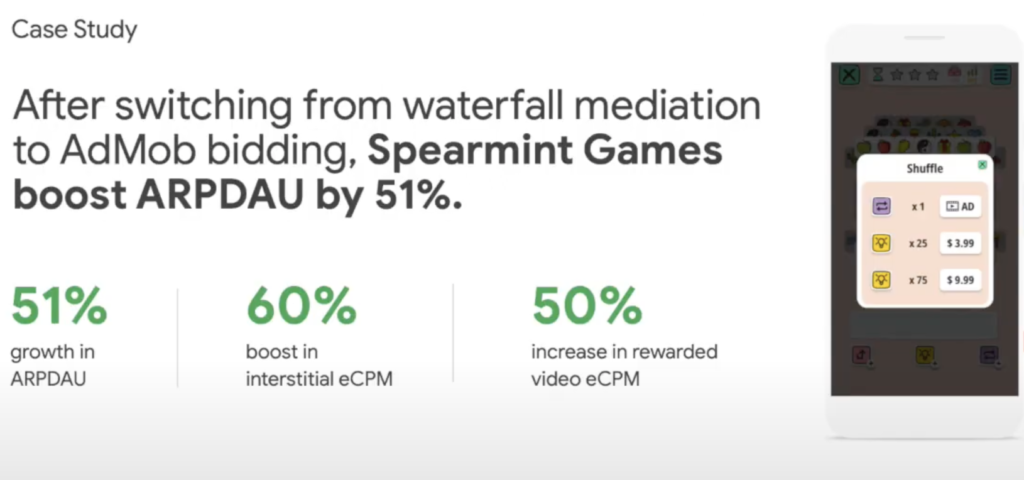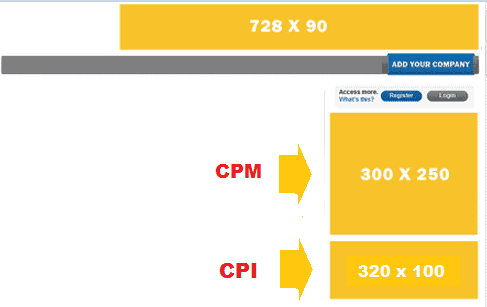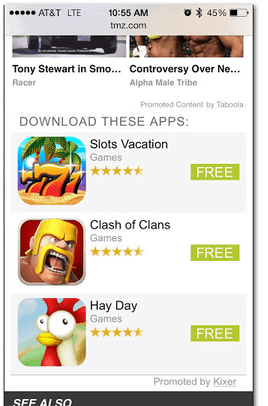As the gaming industry continues to grow at an unprecedented rate, in-game advertising has emerged as a powerful tool for publishers, allowing them to capitalize on their audiences while delivering value to brands. But to truly reap the benefits of this strategy, publishers need to understand not only how in-game ads work but how best to implement them.
In-game advertising has become a popular way for game developers to monetize their games. With the rise of mobile gaming, in-game advertising has become even more prevalent, as developers seek to find new ways to generate revenue. However, selecting the right monetization model can be a daunting task.
In-Game Advertising Monetization Model 1: Real-time bidding
Real-time bidding, or RTB, is a popular option for game developers. This model allows advertisers to bid on ad space in real-time, which can result in higher revenue for developers. RTB ads are also highly targeted, which means that they are more likely to be relevant to the player. This can result in higher engagement and better user experience.Direct sold ads, on the other hand, are sold directly to advertisers. This model can result in higher revenue for developers, as they are able to negotiate higher rates with advertisers. Direct sold ads are also more customizable, which means that developers have more control over the ads that appear in their games.
In-Game Advertising Monetization Model 2: Ad mediation
Ad mediation is another for game developers. This model involves using a third-party mediator to manage and optimize your ad inventory. Ad mediation can be a good option for developers who are new to in-game advertising, as it allows them to focus on developing their games while the mediator handles the advertising.While each model has its own unique benefits and drawbacks, finding the right balance between them is crucial. For instance, using a combination of direct sold and RTB ads can result in higher revenue and better engagement.
Ad mediation can also be used in conjunction with other models to optimize ad inventory and ensure that ads are relevant to the player.Ultimately, the key to successful in-game advertising is to find the right monetization model for your game. By understanding the benefits and drawbacks of each model, you can make an informed decision that will help you generate revenue and provide a better user experience for your players.In-game advertising has become a popular and effective way for publishers to generate revenue and for advertisers to reach their target audiences.
In-Game Ad Types
In-game advertising isn’t a one-size-fits-all endeavor. Understanding the diverse array of ad formats is key to crafting campaigns that resonate with players while respecting the gaming experience. Let’s explore some of the most common and effective types:
Static Ads: Seamlessly Integrated Brand Presence
These ads are seamlessly woven into the game environment, like billboards in racing games or posters on city walls in open-world adventures.
Pros: High visibility and constant exposure reinforce brand awareness throughout gameplay.
Cons: Can become background noise if not visually appealing or contextually relevant.
Dynamic Ads: Adapting to the Gameplay
These ads change based on real-time factors, such as the player’s location, progress, or in-game events. Imagine a sports game where the stadium banners change to reflect current sponsorships.
Pros: Offer a more personalized experience, increasing the chance of engagement.
Cons: Require more sophisticated technology and careful integration to avoid disrupting gameplay.
Interactive Ads: Engaging Players Actively
These ads invite players to participate, often through mini-games, quizzes, or clickable elements. Think of a playable ad where users can test drive a virtual car before being directed to a website.
Pros: High engagement potential and the ability to collect valuable user data.
Cons: Risk of interrupting gameplay if not implemented thoughtfully.
Rewarded Video Ads: Incentivizing Viewership
Players opt-in to watch short video ads in exchange for in-game rewards like extra lives, currency, or exclusive items.
Pros: High view completion rates and positive player sentiment due to the value exchange.
Cons: Can be perceived as intrusive if not balanced with other ad formats.
Native Ads: Blending In with the Experience
Native ads are designed to match the look and feel of the game, making them less disruptive. An example would be a sponsored item in a virtual store that fits the game’s aesthetic.
Pros: Subtle and less likely to annoy players, contributing to a more positive brand association.
Cons: Can be less noticeable and may require creative integration to be effective.
The ideal in-game advertising strategy often involves a mix of these formats, tailored to the specific game genre, target audience, and desired outcomes.
Targeting the Right Players: The Art of Precision in In-Game Advertising
In the vast and diverse gaming world, a one-size-fits-all approach to advertising simply won’t cut it. Just as a fisherman wouldn’t use the same bait for every type of fish, advertisers must tailor their messages to resonate with specific player segments. Effective in-game advertising hinges on the ability to identify and engage the right players at the right time. This involves delving into the nuances of player demographics, preferences, and behaviors.
Understanding who your ideal player is goes beyond simple demographics like age and gender. It involves understanding the genres they gravitate towards, the platforms they prefer, and even the times of day they’re most active. By analyzing in-game behavioral patterns, advertisers can uncover valuable insights into player motivations, preferences, and purchase habits. This data-driven approach allows for the creation of highly targeted campaigns that deliver relevant messages and offers to players who are most likely to respond.
Imagine a luxury car brand strategically placing its ads within a racing simulation game where players are already immersed in a world of high-performance vehicles. Or consider a mobile game developer promoting their latest puzzle game to players who have demonstrated an affinity for brain teasers. By aligning ad content with player interests and in-game context, advertisers can create a more seamless and engaging experience, ultimately driving brand recall and conversion.
Always Maintain Player-First Focus
It is always a good approach to ensure that ads are relevant to the game and very smoothly integrated within the app. Here’s what you might consider:
Right Placement: The placement of ads plays a key role in blending the ads smoothly in the game. Ads should either appear during breaks or pauses, or ads should be easy to ignore when in the heat of it.
Make Ads Rewarding: Make sure that the users are delighted after they choose to view the ads. Power up the player, and they’ll get soft on your brand.
Theme: Ads must blend with the entire game’s theme and story.
Audience Targeting
One of the key factors that make in-game advertising so effective is audience targeting capability. By targeting the right audience, advertisers can increase the chances of their ads being seen by people who are most likely to be interested in their products or services. To effectively target audiences, publishers need to deeply understand their players’ demographics, interests, and behaviors.
They can gather this information from various sources, such as social media, analytics, and third-party partners. By analyzing this data, publishers can create detailed profiles of their players, which can be used to deliver ads that are tailored to each player’s unique preferences and behaviors.For example, if a player frequently searches for sports-related content and follows sports teams on social media, advertisers can use this information to deliver ads for sports-related products or services. This targeted approach not only increases the chances of the player engaging with the ad but also improves the conversion rates for advertisers. Furthermore, in-game advertising can also offer advertisers the opportunity to reach players at specific points in their gameplay.
For instance, if a player is stuck on a particular level, advertisers can deliver ads that offer tips or solutions to help the player progress. This not only provides value to the player but also increases the chances of the player engaging with the ad. Audience targeting is a critical component of in-game advertising that allows publishers to match ads with players who are most likely to be interested in their content. By leveraging data from various sources, publishers can create detailed profiles of their players, which can be used to deliver ads that are tailored to each player’s unique preferences and behaviors. This targeted approach not only increases engagement but also improves conversion rates for advertisers.
Understanding the Benefits of In-Game Advertising

Beyond generating revenue, in-game advertising offers publishers a range of benefits. From attracting new players to building brand awareness, evidence suggests that in-game advertising is an essential tool in the publisher’s toolkit.
One of the most significant benefits of in-game advertising is its ability to attract new players. With the rise of mobile gaming, in-game advertising has become an effective way for publishers to reach new audiences. By placing ads in popular games, publishers can expose their brand to millions of potential customers who may have never heard of them before. This can be especially useful for smaller publishers who are looking to gain market share.
In addition to attracting new players, in-game advertising can also help build brand awareness. By placing ads in popular games, publishers can create a lasting impression on players. This can be especially effective if the ad is relevant to the game’s content. For example, a car manufacturer may choose to advertise in a racing game. This not only helps build brand awareness, but it also creates a positive association between the brand and the game.
In-game advertising can also help create additional revenue streams. For instance, offering players the ability to watch video ads in exchange for in-game currency can provide a lucrative revenue stream while enhancing player engagement. This type of advertising is known as rewarded video, and it has become increasingly popular in recent years. By offering players a tangible reward for watching an ad, publishers can increase engagement and revenue at the same time.
Another benefit of in-game advertising is its ability to provide valuable data to publishers. Publishers can gain insights into their audience’s preferences and interests by tracking player behavior and engagement with ads. This can be used to create more targeted and effective advertising campaigns in the future. From attracting new players to building brand awareness and creating additional revenue streams, in-game advertising has become an essential tool in the publisher’s toolkit.
Leveraging In-Game Advertising for Maximum Reach
One of the essential benefits of in-game advertising is the ability to reach a diverse and engaged audience. By effectively leveraging in-game ads, publishers can expand their reach, broaden their audience, and build a loyal fan base.
One of the best ways to expand your reach is by offering targeted, contextual ads that are tailored to your audience’s specific interests and behaviors. Using data analytics, publishers can deliver ads that are tailored to specific players, maximizing engagement and conversion.
Maximizing In-Game Advertising Revenue

The gaming industry has grown exponentially over the past decade, and so has the potential for in-game advertising revenue. In-game advertising is a lucrative revenue stream for publishers but requires careful planning and execution to maximize its potential.
One strategy for maximizing in-game advertising revenue is to offer players the ability to make in-game purchases. This approach not only generates ongoing revenue but also provides added value to players. For example, a game may offer players the ability to purchase virtual currency, which can then be used to unlock new levels or purchase in-game items. This approach not only generates revenue but also incentivizes players to keep playing the game.
Another approach to maximizing in-game advertising revenue is creating unique, branded ads targeted to specific audiences. This approach can help build brand awareness and recognition while generating higher revenue from advertisers who are willing to pay a premium for placement. For example, a popular game with a specific demographic, such as young adults, can attract advertisers looking to target that demographic. The game can then create unique, branded ads that appeal specifically to that demographic, increasing the likelihood that the ads will be effective.
It’s important to note that in-game advertising should be integrated seamlessly into the game experience. Players should not feel as though they are being bombarded with ads or that the ads are detracting from the gameplay. Instead, ads should be integrated in a natural and unobtrusive way. For example, a game may include billboards or posters in the game environment that feature real-world advertisements.
You need to track and analyze the performance of in-game advertising campaigns. Use analytics tools daily to measure the effectiveness of ads and adjust their strategies accordingly. This can help ensure that publishers maximize their revenue while providing a positive experience for players.
Optimizing In-Game Ads for Different Platforms
Ad optimization is a critical component of successful in-game advertising. It is essential to optimize ads for different platforms and devices, including mobile, console, and PC. Different devices present different challenges, including screen size, processing power, and connectivity.
When optimizing ads for mobile devices, it’s important to consider the smaller screen size and limited processing power. Mobile users are often on the go and may not have a stable internet connection. Therefore, it’s important to create ads that are quick to load and easy to interact with. One way to achieve this is by using native ads that blend seamlessly into the game’s design and don’t disrupt the user’s experience. Additionally, mobile-specific ad formats such as rewarded video ads or playable ads can be used to increase engagement and provide value to the user.
Console gaming presents a different set of challenges when it comes to ad optimization. Console users typically have larger screens and more processing power than mobile users, but they may not be as receptive to ads. To optimize ads for consoles, it’s important to create immersive ads that add value to the user’s experience. For example, ads that offer exclusive in-game content or discounts can be effective in this context. Additionally, ads that are integrated into the game’s storyline or narrative can enhance the user’s experience.
PC gaming offers a unique opportunity for ad optimization due to the device’s processing power and larger screen size. PC users are often more receptive to ads than console users, but they also have higher expectations for the quality of the ads. To optimize ads for PC, it’s important to create visually stunning and interactive ads. For example, ads that allow users to interact with the product or service being advertised can be effective in this context. Additionally, ads that are personalized to the user’s interests and preferences can increase engagement and conversion rates.
Follow these optimization tips as well:
1) Consider Google guidelines on ad implementation
- Ensure that the ads are in a reasonable distance from the download link to avoid users to accidentally click on the ad.
- If you have a flash game, Adsense recommends 150 pixels in distance between the edge of a game and the ad.
- Cross-check if games have sexual or violent content, and stay away from profane and explicit language descriptions.
- Placing ads on games that you do not have permission to distribute or monetize is also prohibited
- Never, ever use AdSense for Content or AdX tags as pre-roll or mid-roll of any flash games as there is AdSense for Games.
- Comment moderation should be in place to avoid trash talking between players if you are hosting the games.
- To get the whole list of guidelines, check out https://support.google.com/adsense/answer/1706015
2) Think of ad range and variety
I am talking about ads in different models – CPM and CPI. SuperData estimates an average of $2.73 for mobile games. But remember that 1 out of 10 or 20 will probably be interested. Thus, it is important to have both. Below is one suggestion on how to make the most of above-the-folds which can really sell well.

3) Pair up with premium ad networks that perform well on game sites.
- Check out our previous post on the Top 5 Ad Networks for the Gaming Vertical.
- Partner with MonetizeMore to get ads on the game sites and apps.

Avoiding Common Pitfalls in In-Game Advertising
In-game advertising has become a popular way for game developers to monetize their products while offering players a free-to-play experience. However, implementing in-game advertising can be tricky, and publishers must be careful to avoid common pitfalls that can negatively impact their revenue and player engagement.
One of publishers’ most significant challenges is overloading players with too many ads. While advertising is necessary for monetization, publishers must strike a balance between generating revenue and maintaining player engagement. Too many ads can lead to player fatigue, causing them to lose interest in the game and ultimately resulting in decreased engagement and revenue.
Another common pitfall to avoid is implementing ads that interfere with gameplay or negatively impact the player’s experience. Ads that disrupt gameplay or are too intrusive can frustrate players and cause them to lose interest in the game. Publishers must be mindful of how they implement ads, ensuring that they are seamlessly integrated into the game and enhance the player’s experience rather than detract from it.
Effective ad targeting strategies can also help mitigate these risks by delivering ads that resonate with players and enhance their engagement with the game. By targeting ads to specific demographics or interests, publishers can ensure that players are more likely to engage with the ads and less likely to view them as a nuisance.
It is also important for publishers to consider the format of their ads. While traditional banner ads are a popular option, they can be less effective than other formats such as rewarded video ads or native ads. Rewarded video ads offer players an incentive, such as in-game currency, for watching the ad, while native ads are seamlessly integrated into the game’s environment, making them less intrusive and more engaging.
While in-game advertising can be a lucrative way for publishers to monetize their products, it is essential to avoid common pitfalls that can negatively impact player engagement and revenue. By striking a balance between generating revenue and maintaining player engagement, implementing effective ad targeting strategies, and considering the format of their ads, publishers can successfully integrate in-game advertising into their products.
Major Ad Server for In-Game Advertising
MonetizeMore is a renowned ad server that specializes in in-game advertising for publishers, enabling them to maximize their ad revenue. Here are five reasons why it has gained prominence as a major player in this field:
- Advanced Targeting Capabilities: MonetizeMore provides publishers with sophisticated targeting options to deliver highly relevant ads to gamers. By leveraging demographic, behavioral, and contextual targeting, publishers can serve ads that align with the interests and preferences of their audience. This enhances the user experience, increasing engagement and ad revenue.
- Real-Time Bidding (RTB) Integration: The platform integrates with real-time bidding (RTB) networks, allowing publishers to access a vast pool of advertisers and ad inventory. RTB enables dynamic ad pricing and facilitates efficient ad serving, maximizing the potential for publishers to generate higher revenues through competitive bids and optimal ad placements.
- Ad Format Variety: MonetizeMore supports various ad formats suitable for in-game advertising, including display ads, native ads, video ads, and interactive ad units. This versatility enables publishers to choose the formats that best suit their gaming environment and engage their audience effectively. By offering a diverse range of ad formats, MonetizeMore enables publishers to monetize their games in a way that fits seamlessly with the gameplay experience.
- Performance Optimization: The platform employs advanced algorithms and machine learning techniques to optimize ad performance continually. MonetizeMore analyzes data on user behavior, ad performance metrics, and monetization patterns to make data-driven decisions and automatically optimize ad placements for maximum revenue. Publishers can leverage these insights to enhance ad monetization strategies and improve overall revenue outcomes.
- Reliable Tracking and Reporting: MonetizeMore offers comprehensive tracking and reporting tools that provide publishers with detailed insights into their ad campaigns’ performance. Publishers can access real-time data on impressions, clicks, conversions, and revenue, enabling them to make informed decisions and refine their advertising strategies. The transparency and accuracy of the tracking and reporting features help publishers optimize their ad inventory and revenue generation effectively.
These factors contribute to MonetizeMore’s standing as a major ad server in in-game advertising, empowering publishers to optimize their ad revenue by leveraging advanced targeting, RTB integration, diverse ad formats, performance optimization, and robust tracking and reporting capabilities. Wanna maximize your gaming ad revenue? Let’s talk!
Related Reads:
source https://www.monetizemore.com/blog/monetize-game-sites-ads/



0 Comments